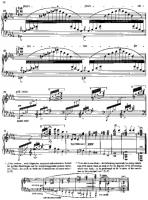
#Un sospiro by franz lizst download
Hear pianist Paul Barton play three versions of “Un Sospiro” above and download the sheet music for the piece here. And some of the most celebrated examples of pieces played with three-hand technique come not from Thalberg but from Liszt, such as “Un Sospiro” (“A Sigh”), the last of his Three Concert Études, composed between 18, not only as performance pieces, but - as it so happens - for the general improvement of a pianist’s technique. Liszt is now celebrated as “the most charismatic virtuoso of all time,” while Thalberg is hardly remembered. And finally Liszt and Thalberg were both proclaimed victors by this glittering and intelligent assembly. The most profound silence fell over that noble arena. Each of them prudently stayed within his harmonic domain, but each used every one of his resources. Never was Liszt more controlled, more thoughtful, more energetic, more passionate never has Thalberg played with greater verve and tenderness. The Countess “gave a charity event for the refugees of the Italian war of independence, and the contemporary press compared the concert to the battle between Rome and Carthage.” Countess Belgiojoso herself (as did the press) pronounced the outcome a draw: Three hands were heard, two were visible!” Might this somehow be easier than playing duets? Three-hand technique is a dextrous sleight-of-hand developed in the 1830s, most prominently by pianist Sigismond Thalberg, a rival of Franz Liszt who could “apparently not only counter Liszt’s legendary fire and thunder with subtlety,” Bryce Morrison writes at Gramophone, “but who played as if with three hands.

How, you might wonder, does one play the piano with three hands? It does not take an extra limb or a partner with one hand tied behind their back.

Researchers Izzet Yucetoker and Koksal Apaydinli suggest a possible intervention - overcoming the difficulties of playing four-hand pieces by learning to play what are called “three-hand pieces.” The student of the piano can advance solo or with another player in duets, playing what are called “four-hand pieces.” But learning “to gain the attitudes of duet playing” poses a challenge. “Piano education is important for teaching polyphony, improving sight-reading, consolidating the knowledge of harmony and gaining much more musical abilities,” write Turkish researchers in the behavioral sciences journal Procedia.


 0 kommentar(er)
0 kommentar(er)
